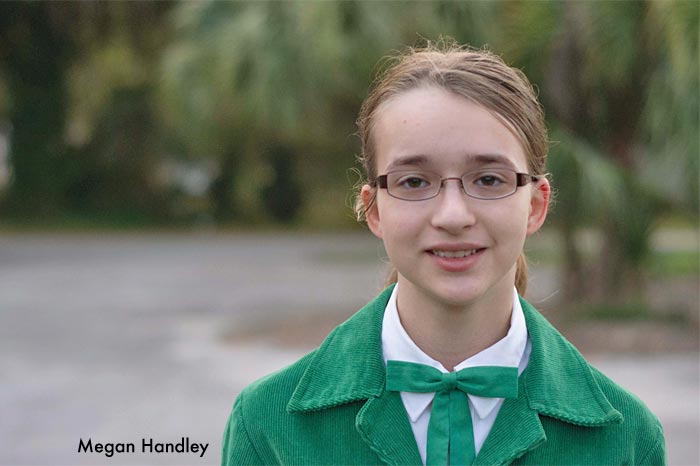How Megan Handley has been — and plans to stay — involved in agriculture
AGRICULTURE is a most important industry, but statistics show women are underrepresented in leadership roles in agriculture across the United States. Programs like 4-H and FFA provide a framework for encouraging young girls to take on leadership roles in agriculture, which is paramount to raising women in agriculture — both in number and in excellence.
PROVIDING LEADERSHIP OPPORTUNITIES
Take Megan Handley, the current Polk County 4-H Youth Council president, for example. She started in 4-H early. “When I was eight years old, my grandmother gave me a pair of chickens,” she recalls. “My mom decided to enroll me into Dream Catchers 4-H.” She now leads the council. “I am responsible for running the council meetings, ensuring information from the district council filters down into the county, and I along with the rest of the council help arrange events for the county to participate in, among other things,” she shares.
Her leadership style definitely is a positive one, an important quality for a leader. “I feel the best leaders are the ones who are able to understand and empathize, yet they are able to make those tough choices,” Megan says. “I also think great leaders should be able to step back and allow their followers, for lack of a better word, to grow and learn on their own.”
CREATING CHANCES FOR SUCCESS
Offering opportunities for experiencing success is a cornerstone of ag groups like 4-H, especially when fair season rolls around. Since receiving her first chickens, Megan has participated in the Polk County Youth Fair in a variety of events. “I’ve competed in a good majority of the events, like photography, poultry, pure-bred cattle, table setting, canning, baking, gift baskets, crafts, jewelry, demonstrated talks, chili cookoff, and floral arrangements,” she points out.
While poultry is her favorite, she’s tried her hand at many different things to see where her strengths lie. “I entered many things this year … and for the most part I did well,” she observes. She’s seen much more success than her natural modesty lets on, another endearing trait that will serve her well. “This year, I managed third place in senior poultry showmanship, a Tri-Color in baking for my Cowboy Cornbread, and a Tri-Color for my citrus gift box. I also received first place in demonstrated talks,” she shares.
Megan has also learned a great deal about leadership while learning about agriculture. “The youth fair has helped me learn about responsibility, following through on completing projects at hand, public speaking, and leadership.” She’s also honed in on areas of opportunity. “I tried horticulture once, and that’s when I learned I could barely keep a cactus alive,” she quips.
INTRODUCING ROLE MODELS
Another way in which youth ag groups help to instill leadership qualities in young women is by introducing them to role models. “I look up to Marcia Lightsey, mainly thanks to her dedicated involvement to conserve the ecosystem and her dedication to her 4-H and FFA clubs,” Megan says. Marcia Lightsey, the 2009 Woman of the Year in Agriculture, and her husband, Cary Lightsey, have been honored with numerous awards for their conservation efforts on the Lightsey family’s 32,000 acres.
Role models teach us how to do the right thing. “I’d like to pursue a career as a wildlife manager,” Megan shares. “I’ve always loved working with animals, and in today’s modern world, I feel there is a need for them now more than ever.”
CREDITS
article by ERIKA ALDRICH
photo by CHELSEA WALDMAN
Posted May 27, 2016

